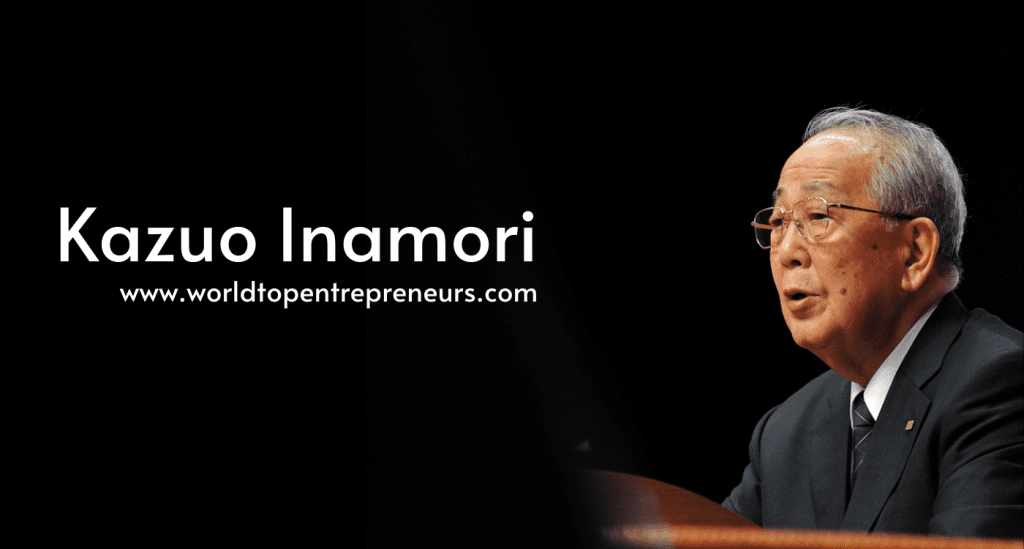In the world of electronics and ceramics, few figures stand as prominently as Kazuo Inamori. As the founder of Kyocera Corporation, Inamori’s journey from a small startup to a global leader in advanced ceramics and electronics is a remarkable testament to his vision, leadership, and innovation. This article delves into Inamori’s early life, the founding of Kyocera, and the company’s evolution into a technological powerhouse.
Early Life and Background
Humble Beginnings
Kazuo Inamori was born on January 30, 1932, in the small town of Kagoshima, Japan. Raised in a modest environment, Inamori’s early life was marked by a blend of curiosity and resilience. His parents, though not wealthy, were dedicated to providing a nurturing environment that emphasized the value of education and hard work.
From a young age, Inamori exhibited a keen interest in technology and problem-solving. He was particularly fascinated by the potential of materials and their applications. This early curiosity laid the foundation for his future endeavors in the field of ceramics and electronics.
Educational Pursuits
Inamori’s academic journey led him to Kagoshima University, where he pursued a degree in materials science. His studies focused on the properties and applications of various materials, a field that would later become central to his work at Kyocera.
During his time at Kagoshima University, Inamori’s passion for research and innovation became evident. He was known for his meticulous approach to experiments and his ability to think outside the box. His academic achievements were complemented by his commitment to hands-on learning, which prepared him for the challenges he would face as an entrepreneur.
Founding Kyocera Corporation
Vision and Innovation
In 1959, Kazuo Inamori took a significant step towards realizing his vision by founding Kyocera Corporation. The company’s name, derived from “Kyoto Ceramics,” reflected Inamori’s initial focus on advancing ceramic technology. From the outset, Inamori aimed to create a company that would revolutionize the ceramics industry through innovation and quality.
The early years of Kyocera were marked by both challenges and breakthroughs. Inamori’s vision was to develop high-performance ceramic materials that could be used in various applications, from electronics to industrial components. Despite limited resources and intense competition, Inamori’s determination and technical expertise drove the company forward.
One of Kyocera’s early successes was the development of advanced ceramic materials with superior properties. These materials were not only highly durable but also offered exceptional performance in high-temperature and high-stress environments. This breakthrough positioned Kyocera as a leader in the field of ceramics and laid the groundwork for future innovations.
Overcoming Early Challenges
The journey of establishing Kyocera was not without obstacles. Inamori faced numerous challenges, including financial constraints, competition from established players, and the need to build a strong reputation in a competitive market. However, his strategic approach and unwavering commitment to quality helped the company overcome these hurdles.
Inamori’s focus on research and development played a crucial role in addressing these challenges. By investing in cutting-edge technologies and fostering a culture of innovation, Kyocera was able to stay ahead of the competition and deliver products that met the evolving needs of its customers.
Growth and Expansion
Technological Innovations
As Kyocera grew, its commitment to technological innovation remained a cornerstone of its success. Inamori’s leadership emphasized the importance of continuous improvement and the exploration of new technologies. Under his guidance, Kyocera developed a range of advanced products that pushed the boundaries of what was possible in ceramics and electronics.
One of the notable innovations during this period was the development of ceramic substrates for electronic devices. These substrates provided improved performance and reliability compared to traditional materials, making them a critical component in the growing electronics industry. Kyocera’s advancements in this area helped the company establish a strong presence in the global electronics market.
In addition to ceramics, Kyocera expanded its product offerings to include a wide range of electronic components, including semiconductors, solar cells, and imaging devices. This diversification allowed Kyocera to tap into new markets and capitalize on emerging trends in technology.
International Expansion
The success of Kyocera in Japan set the stage for its expansion into international markets. Inamori recognized the importance of global growth and sought to establish a presence in key regions around the world. The company’s international expansion strategy involved setting up subsidiaries, forming strategic partnerships, and building distribution networks.
By the 1970s, Kyocera had established a strong foothold in North America and Europe. The company’s commitment to quality and innovation resonated with customers in these regions, leading to increased market share and brand recognition.
Kyocera’s international expansion was marked by a focus on localization and adaptability. Inamori’s approach involved tailoring products and services to meet the specific needs of different markets. This strategy helped the company build strong relationships with local customers and partners.
Impact on the Ceramics and Electronics Industry
Setting New Standards
Kazuo Inamori’s contributions to the ceramics and electronics industries have been transformative. Kyocera’s innovations in ceramic materials and electronic components have set new standards for performance, reliability, and quality.
Kyocera’s advancements in ceramic technology have had a profound impact on various industries. For example, the company’s ceramic substrates are widely used in electronic devices, including smartphones, computers, and automotive systems. These substrates provide superior performance and reliability, enabling the development of more advanced and efficient electronic products.
In addition to ceramics, Kyocera’s work in electronics has played a significant role in shaping the industry. The company’s semiconductor products, solar cells, and imaging devices have contributed to advancements in technology and sustainability.
Promoting Technological Advancements
Inamori’s dedication to research and development has been a driving force behind Kyocera’s technological advancements. The company’s investment in R&D has led to the development of new materials, technologies, and products that address emerging challenges and opportunities.
Kyocera’s commitment to innovation extends beyond its own operations. The company has actively collaborated with research institutions, universities, and industry partners to advance the field of ceramics and electronics. These collaborations have resulted in breakthroughs that benefit not only Kyocera but also the broader technology community.
Inamori’s approach to innovation emphasizes the importance of continuous improvement and adaptation. By staying at the forefront of technological developments, Kyocera has been able to offer cutting-edge solutions that meet the evolving needs of its customers.
Legacy and Recognition
Awards and Honors
Kazuo Inamori’s contributions to the ceramics and electronics industries have been recognized through numerous awards and honors. His leadership and innovation have earned him a reputation as a visionary in the field.
Kyocera Corporation has received accolades for its products and technologies, reflecting Inamori’s commitment to excellence. The company’s achievements have been acknowledged by industry organizations and associations, highlighting its impact on the ceramics and electronics sectors.
Inamori himself has been recognized for his leadership and contributions to technology. His influence extends beyond Kyocera, as his work has inspired other professionals and companies in the industry.
Continuing Impact
Kazuo Inamori’s legacy continues to shape the ceramics and electronics industries. The principles and values he established at Kyocera remain integral to the company’s operations and philosophy. Inamori’s commitment to quality, innovation, and customer satisfaction continues to drive the company’s success.
The impact of Inamori’s work extends beyond Kyocera. His contributions to technology and his approach to business have influenced the development of new materials, technologies, and products. Inamori’s legacy serves as a beacon of inspiration for those who seek to push the boundaries of what is possible and make a lasting impact on the world.
Conclusion
Kazuo Inamori’s journey from a young student with a passion for technology to the founder of Kyocera Corporation is a testament to his vision, leadership, and innovation. His contributions to the fields of ceramics and electronics have had a profound impact on the industry, setting new standards for performance and quality.
Kyocera’s success and its continued focus on innovation reflect Inamori’s legacy. His commitment to excellence, continuous improvement, and customer satisfaction has driven the company’s growth and shaped its position as a global leader in technology.
As Kyocera continues to evolve and thrive, Kazuo Inamori’s influence remains a guiding force. His work has not only shaped the ceramics and electronics industries but has also inspired future generations of engineers and innovators. Inamori’s legacy is a testament to the power of vision, dedication, and perseverance in making a meaningful impact on the world.





















